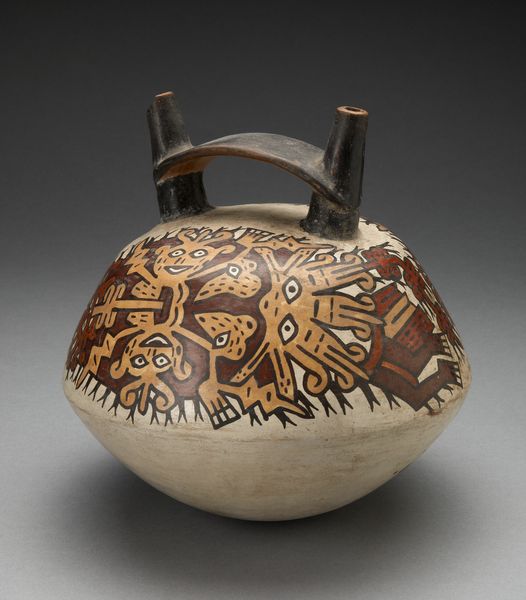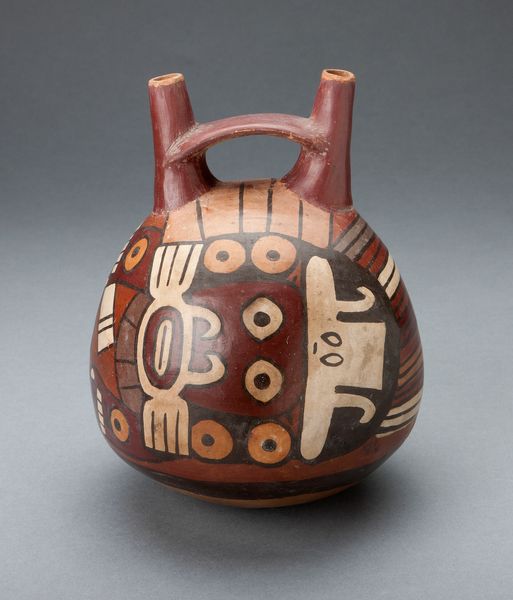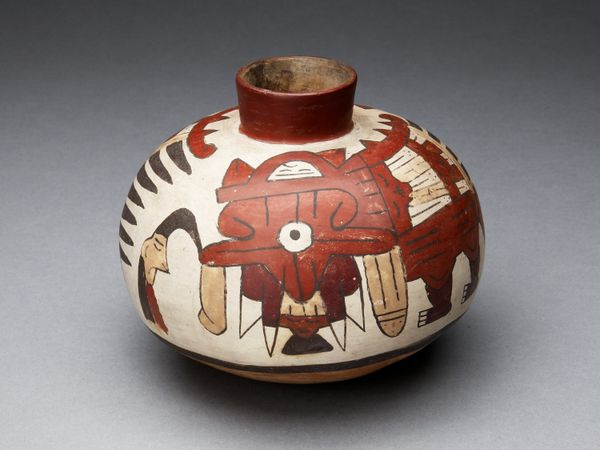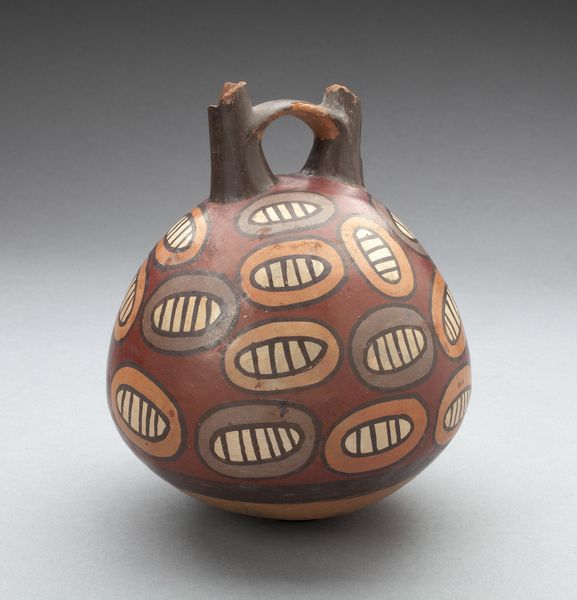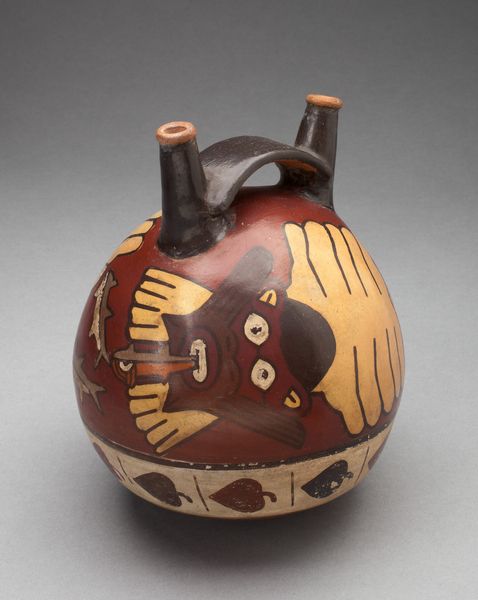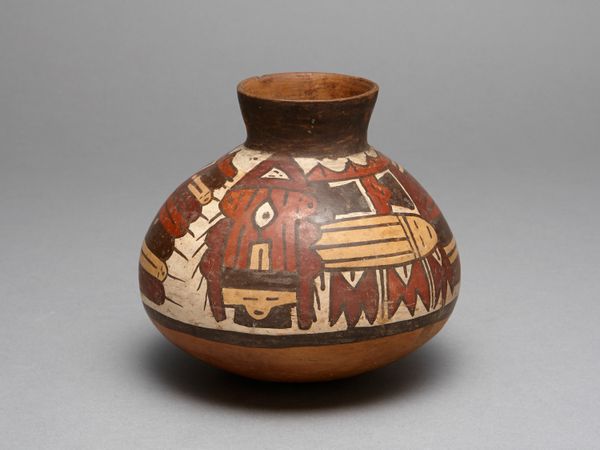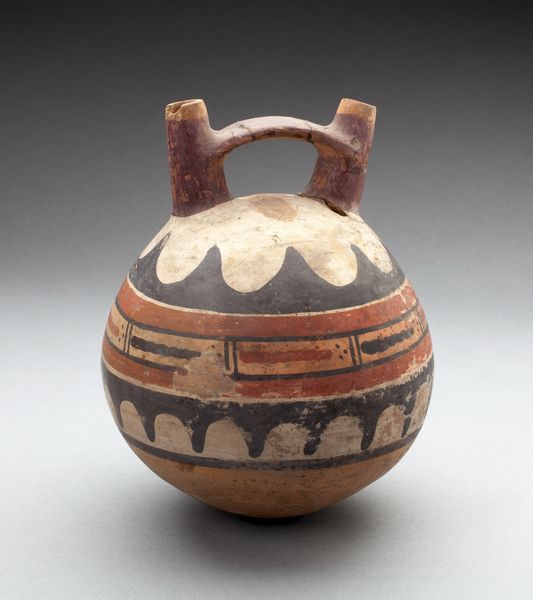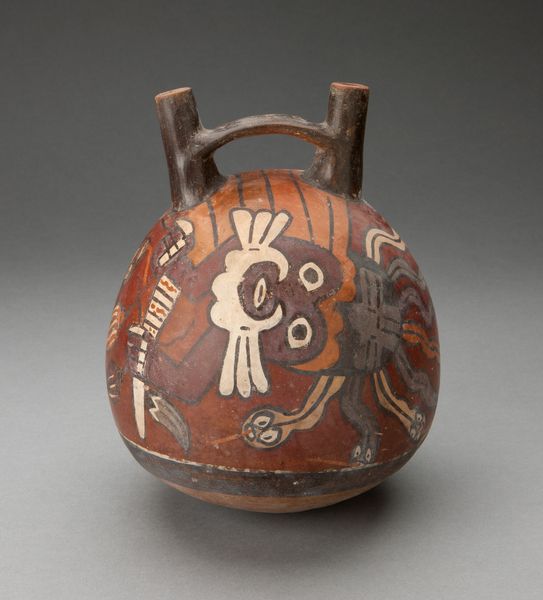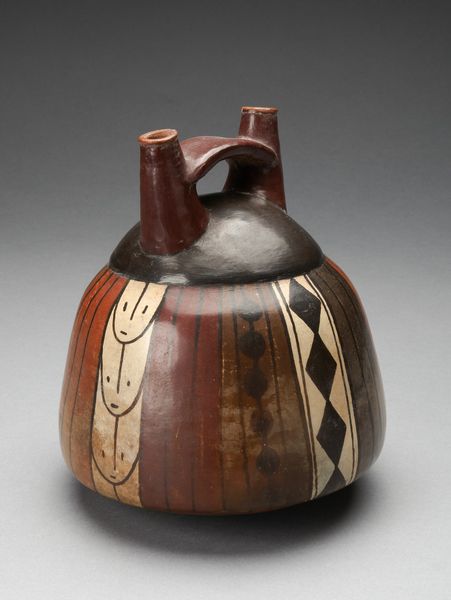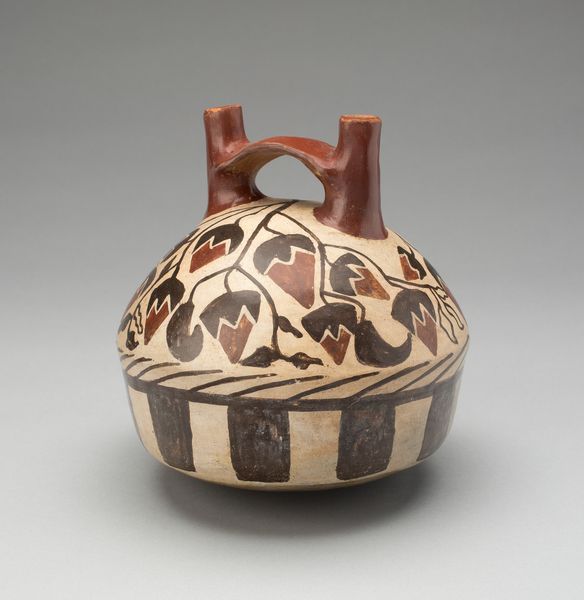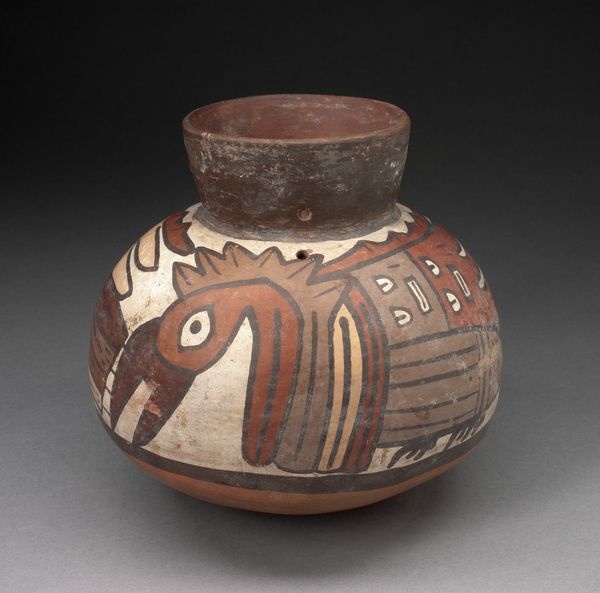
Vessel Depicting Ritual Performer Wearing a Feline Mask with a Symbolic Headdress Trailer c. 180 - 500
0:00
0:00
ceramic, earthenware
#
ceramic
#
figuration
#
earthenware
#
ceramic
#
indigenous-americas
Dimensions: 17.8 × 17.2 cm (7 × 6 3/4 in.)
Copyright: Public Domain
Curator: This intriguing ceramic vessel, dating from around 180 to 500 CE, comes from the Nazca culture of ancient Peru. It’s currently held here at the Art Institute of Chicago. Editor: Well, it's definitely striking. The colors, the stylized faces... it almost has a haunting quality. Is it the wide eyes staring out? Curator: Yes, quite. The imagery depicts a ritual performer, likely wearing a feline mask, with an elaborate headdress trailer—hence the object’s rather long title! These vessels served not just as functional objects but as potent cultural symbols. The imagery provides us insight into their social roles and systems. Editor: It's fascinating how they transformed something utilitarian like a vessel into this dense package of meaning. I'm wondering, what would it take to make something like this? What kind of clay did they use, what was the firing process? Those clean lines on the faces suggest careful planning and craftsmanship. Curator: That's where it gets compelling, the ceramic production likely involved specialized artisans. It highlights a system of knowledge and skills passed down through generations, reflecting societal values around craftsmanship and potentially reinforcing social hierarchies, as well. The Nazca were masters of pigment too, achieving remarkably vibrant colors. Editor: Those colours really stand out. How was that earthy red pigment sourced? Understanding the provenance of those materials gives the object so much more depth. Curator: Indeed. Red ochre, for instance, was common. Each shade connects us back to the landscape and trade routes that sustained the Nazca people. Beyond sheer beauty, objects like these illuminate cultural practices, societal organization, and ritual life. It reminds us art serves to reflect, preserve, and perhaps transform collective identity. Editor: Absolutely. When you focus on the process of its making, you reveal this network of labor and materials. It humanizes the object, connects it directly to the people and the environment it came from. That makes the vessel, to me, even more precious, beyond any market value or art historical relevance.
Comments
No comments
Be the first to comment and join the conversation on the ultimate creative platform.

